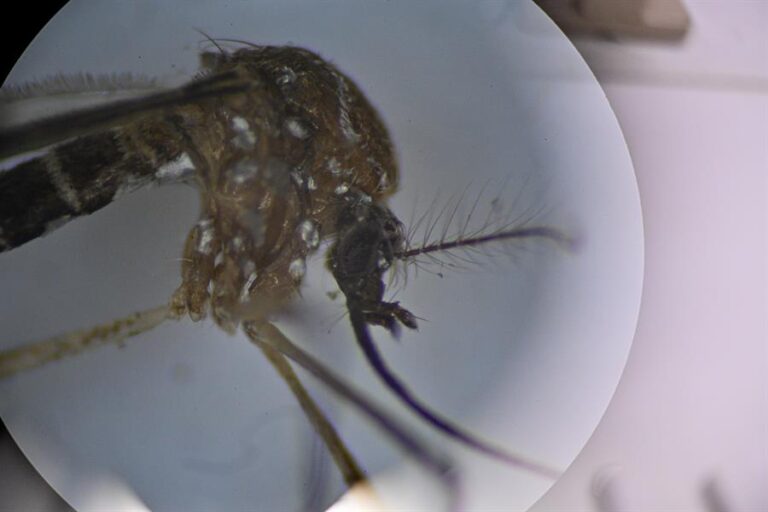
Brazilian Trojan Horse Larvicide
Brasilia, Apr 10 (EFE).-
Amid the worst epidemic of dengue fever in Brazil’s history, researchers are using the same mosquitoes that transmit the disease as Trojan horses to spread a larvicide.
The public laboratory Instituto Fiocruz has developed a technique that involves placing a cloth soaked in larvicide in a container filled with water; mosquitoes that come into contact with the larvicide then spread it, killing larvae.
“Attracted by the water and the black color of the container, the insect comes to the station, where it is contaminated with a larvicide that spreads everywhere, and who better to find the breeding sites than the mosquito itself?” says Professor Rodrigo Gurgel, coordinator of the University of Brasília laboratory responsible for this project.
Brasília is the city with the highest rate of infection during the current epidemic; one of the worst affected neighborhoods is the Structural City, built around a landfill, where a large part of the population lacks basic sanitation.
Year after year, neighbors like Manoel dos Santos see an increase in dengue cases during the rainy season.
“In this street, most of us have already had dengue, including my neighbor and others. There are very few people who have not had it,” Dos Santos said.
In 2020, researchers from the University of Brasilia undertook a project funded by the World Health Organization to install stations with larvicide and tubes to collect and analyze mosquitoes in 150 homes in this neighborhood.
While they are still analyzing the results, Professor Gurgel believes they will “manage to control the mosquito,” since another trial in 2017 in the São Sebastião neighborhood reduced the presence of mosquitoes by 66%.
Since the installation of the stations some residents of Structure City, such as Reginaldo Lima, claim to have noticed an improvement.
“After they started this process, the situation improved a lot. Before, there were a lot of mosquitoes and we couldn’t sleep at night,” he says.
Gurgel explains, “The advantage over other technologies, such as genetically modified mosquitoes, is that there is no need for large laboratories. Any health department can produce a canister at a very low cost.”
Given its effectiveness, the Ministry of Health has recommended its use in Brazilian municipalities to control the Aedes aegypti population, and it has already been used in cities in five states.

In early April, Brazil set a new annual record for deaths from dengue fever, with 1,116 deaths in the first 14 weeks of the year.
For Gurgel, climate change is one of the obvious causes of this situation.
“The higher the temperature, the faster the mosquitoes develop, and the more rainfall, the more breeding sites. In recent years, we have seen a significant increase in temperature and a change in rainfall cycles,” he says.
On the other hand, he also points to the lack of year-round control by the health system and the lack of awareness among the population.
According to the professor, “75% of the breeding sites are found inside houses, which means that if the inhabitants were more careful many breeding sites could probably be eliminated”. EFE
lr/mcd/ics



